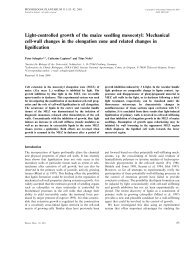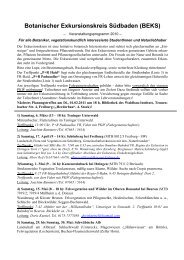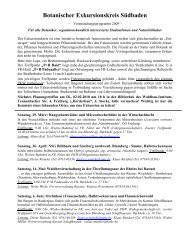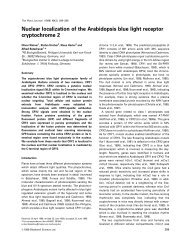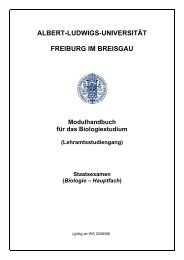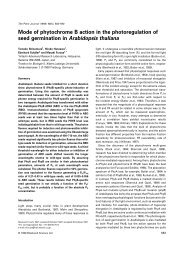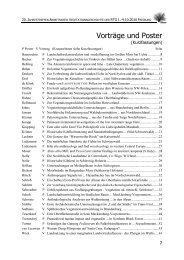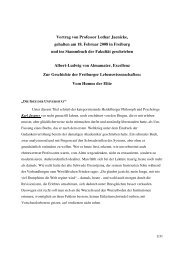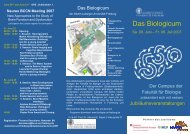SEXUAL SIZE DIMORPHISM AND MORPHOLOGICAL EVIDENCE ...
SEXUAL SIZE DIMORPHISM AND MORPHOLOGICAL EVIDENCE ...
SEXUAL SIZE DIMORPHISM AND MORPHOLOGICAL EVIDENCE ...
Create successful ePaper yourself
Turn your PDF publications into a flip-book with our unique Google optimized e-Paper software.
138 DIEGO SANTIAGO-ALARCON <strong>AND</strong> PATRICIA G. PARKER<br />
FIGURE 4. Scatter plot showing the two variables with the highest discriminating power (tarsus length and<br />
wing chord) for both males and females of the Galápagos Dove by island. Ellipses indicate individuals from<br />
Wolf Island. Inset is the box-plot of discriminant (DA) scores for males and females for the model that<br />
included all samples of the southern subspecies (Z. g. galapagoensis) of the Galápagos Dove. Birds from Wolf<br />
Island are larger than birds on the southern islands for both males and females. This result is supported by the<br />
discriminant analyses, which suggests that tarsus length and wing chord measurements are enough to<br />
confidently separate males from females.<br />
(l5 0.15, x 2 3 5 161.4, P , 0.001). As in the<br />
former model, tarsus was the variable that best<br />
discriminated between groups (l 5 0.19),<br />
followed by wing chord (l 5 0.16), and bill<br />
width (l 5 0.15). The discriminant function<br />
was:<br />
D ~{45:24 z T0:826 ð Þ<br />
z W0:14 ð Þ z BWð0:722Þ: Individuals that scored zero or positive values<br />
were classified as males and those that scored<br />
negative values were categorized as females.<br />
Canonical correlation was high (r 5 0.92). The<br />
model correctly classified 98% of males and<br />
100% of females (Fig. 4). Cross-validation by<br />
the U-method yielded 97% correct classification<br />
for males and 98% for females.<br />
The discriminant analysis for individuals<br />
sampled on Wolf Island retained only tarsus<br />
(T) as a significant variable discriminating<br />
between males and females (l 5 0.14, x 2 1 5<br />
52.6, P , 0.001). The discriminant function<br />
was:<br />
D ~{141:27 z T94:77 ð Þ:<br />
Santiago-Alarcon, Diego, 2008, UMSL, p. 33<br />
Individuals with scores of zero or positive<br />
values were classified as males and those<br />
scoring negative values were classed as females.<br />
Canonical correlation was high (r 5 0.93). The<br />
model correctly classified 100% of males and<br />
100% of females. Cross-validation by the Umethod<br />
yielded 100% correct classification for<br />
males and females. When discriminant scores<br />
for Darwin individuals were computed with the<br />
above function, we obtained 100% correct<br />
classification for both males and females. After<br />
conducting a discriminant analysis that included<br />
the samples from all six islands, the correct<br />
classification of males and females by the model<br />
decreased to around 80%. This result was due<br />
to the inclusion of individuals from Wolf<br />
Island, which are significantly larger than<br />
individuals from other islands, as shown by<br />
the PCA.<br />
We found significant differences among<br />
island populations in the degree of sexual size<br />
dimorphism for both wing chord (Kruskal-<br />
Wallis test: x 2 45 37.8, P , 0.001) and tarsus<br />
(Kruskal-Wallis test: x 2 45 29.3, P , 0.001)<br />
indices. Differences for the wing chord index



